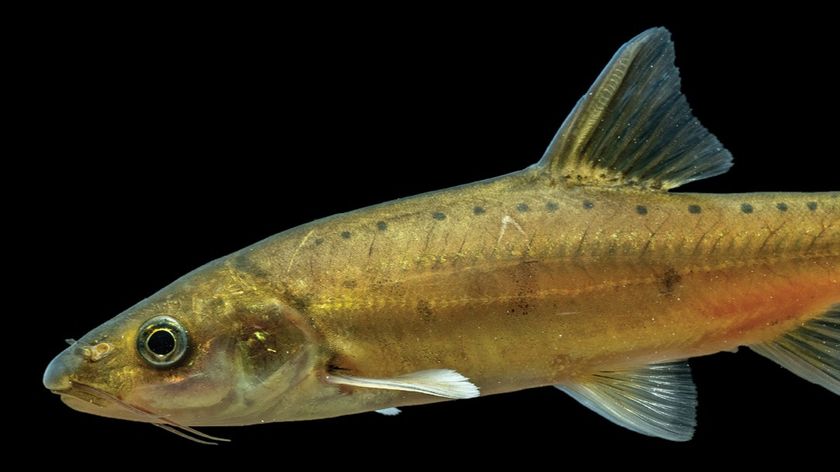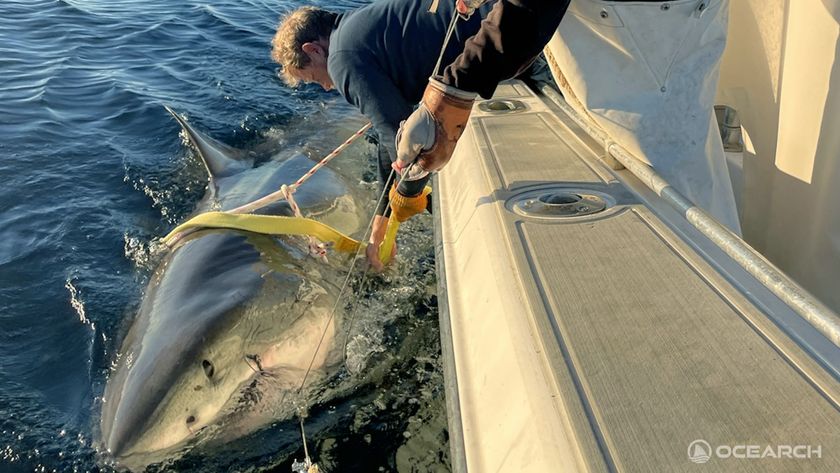Oarfish: Photos of world's longest bony fish
The giant oarfish, which has been known to reach up to a whopping 110 feet (36 meters) long, is considered a deep-sea fish. However, occasionally the slender beast is found washed ashore, dead, on beaches. Here's a look at the monstrous fish in all its glory.
Surprise!
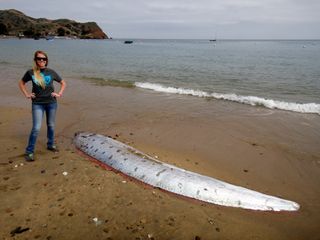
On June 1, Amy Catalano (shown here) and wildlife biologist Tyler Dvorak, both of the Catalina Island Conservancy, were out conducting a breeding bird survey near Emerald Bay on Catalina Island, which is located off the coast of California. They stumbled upon a giant oarfish that had washed ashore. (Photo Credit: © Tyler Dvorak/Catalina Island Conservancy)
Related: Read the full oarfish story
Distinctive dorsal fin
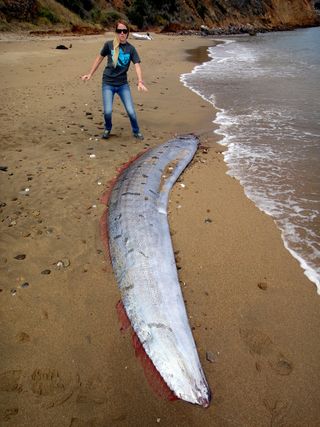
The oarfish wasn't the biggest of its kind, but is estimated to be about 13.5 feet (4 meters) long. Here, Catalano stands with the oarfish on Catalina Island. The pinkish to cardinal red dorsal fin of oarfish originates just above their eyes and extends the length of the fish's body, according to the Florida Museum of Natural History. (Photo Credit: © Tyler Dvorak/Catalina Island Conservancy)
Deep living
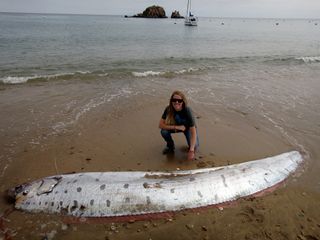
Oarfish (shown here on Catalina Island) are typically found at depths of about 656 feet (200 m) but can lurk as deep as about 3,280 feet (1,000 m), according to the Florida Museum of Natural History. While biologists don't know why the giant fish come to shore, they suspect either they are washed toward beaches by storms or they come to the surface when they're injured or dying. (Photo Credit: © Tyler Dvorak/Catalina Island Conservancy)
Undulating swimmers

When alive, the bony fish swims by undulating its long dorsal fin and keeping the rest of its body straight — called amiiiform swimming, according to the Florida Museum of Natural History. Catalina scientists necropsied (an animal autopsy) the fish that washed ashore on June 1, before shipping its body off to Cal State Fullerton, where scientists would examine it further. (Photo Credit: © Tyler Dvorak/Catalina Island Conservancy)
Floundering fish
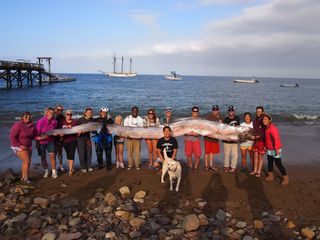
In Oct. 13, 2013, an even bigger oarfish, this one extending some 18 feet (5.5 m), was spotted just off Catalina Island. When Alexa Johnson and Rich Zanelli, of Catalina Island Conservancy, came upon the bony fish, it was floundering in the shallows. It died later, before being pulled ashore. Staffers at the Catalina Island Marine Institute are holding the fish in this shot. (Photo Credit: Catalina Island Marine Institute)
Sign up for the Live Science daily newsletter now
Get the world’s most fascinating discoveries delivered straight to your inbox.
Scientists at the University of California, Santa Barbara, analyzed a tissue sample from the 18-foot fish, only to find it was covered in parasites. "In this little piece of intestine that we had, we found quite a few of these rather large larval tapeworms. One of them was about 15 centimeters (6 inches) long," Armand Kuris, a professor of zoology at UC Santa Barbara, said at the time. [Read more about the 18-foot-long oarfish]
Big head?
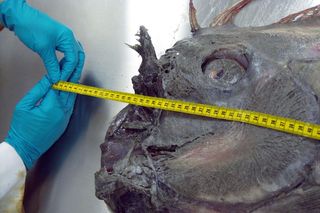
A NOAA biologist measures the head of a giant oarfish that washed up in Southern California. Oarfish get their name from the long paddle-like appendages that help them balance. (Photo Credit: NOAA)
Paddlers
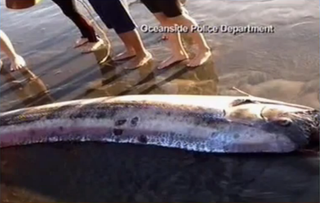
Then on Oct. 18, 2013, a 14-foot-long oarfish washed ashore in Oceanside, California, just north of San Diego. (Photo Credit: Screenshot from Newsy, powered by NewsLook) [See Video of the 14-Foot-Long Oarfish]
Originally published on Live Science.
Jeanna Bryner is managing editor of Scientific American. Previously she was editor in chief of Live Science and, prior to that, an editor at Scholastic's Science World magazine. Bryner has an English degree from Salisbury University, a master's degree in biogeochemistry and environmental sciences from the University of Maryland and a graduate science journalism degree from New York University. She has worked as a biologist in Florida, where she monitored wetlands and did field surveys for endangered species, including the gorgeous Florida Scrub Jay. She also received an ocean sciences journalism fellowship from the Woods Hole Oceanographic Institution. She is a firm believer that science is for everyone and that just about everything can be viewed through the lens of science.
